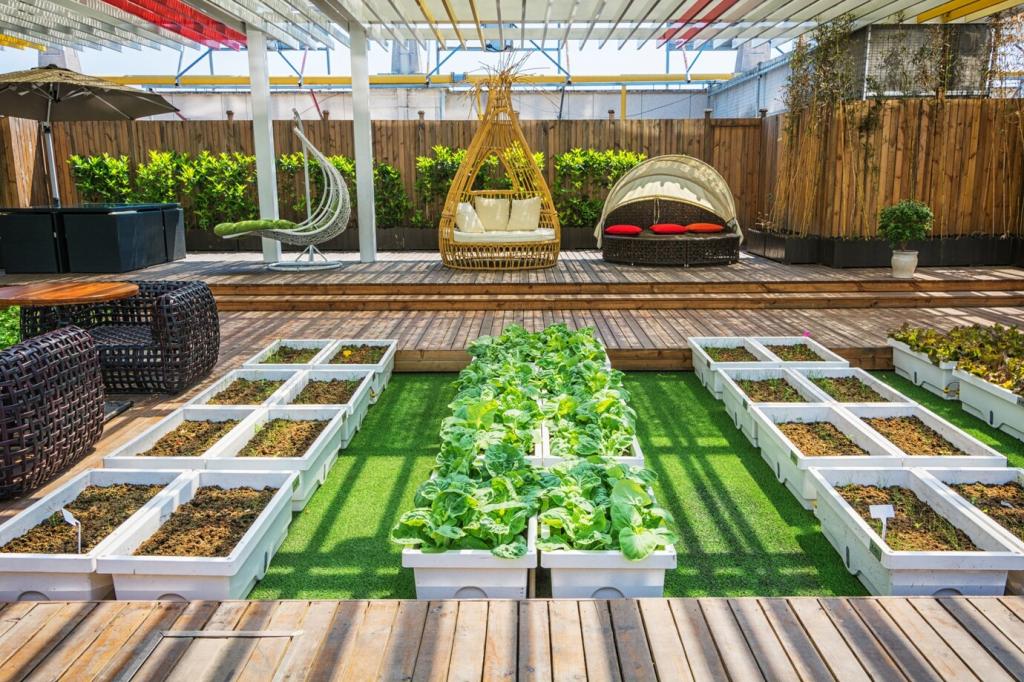Eco-Friendly Gardening Techniques
Eco-friendly gardening is more than a trend—it’s a dedication to nurturing your green space while minimizing environmental impact. By adopting sustainable practices, gardeners can contribute to the health of their local ecosystem, conserve valuable resources, and create vibrant landscapes that support biodiversity. This approach emphasizes harmony with nature, promoting healthy soil, water conservation, and diverse plant life. Whether you’re a seasoned horticulturist or just starting your gardening journey, integrating eco-friendly techniques can transform your outdoor space into a thriving, regenerative haven.

Soil Health and Sustainability
Composting is a cornerstone of eco-friendly gardening and offers a natural way to recycle organic waste into valuable nutrients for your plants. By collecting kitchen scraps and garden clippings, you create a rich, organic matter that feeds the soil and bolsters its structure. This process supports vital microbial life that breaks down nutrients, making them readily available to plants. Over time, your plants become more resilient to disease and environmental stress. Additionally, compost encourages healthy root development, improves soil aeration, and helps retain moisture, reducing the need for chemical fertilizers and frequent watering.
Applying mulch around your plants conserves soil moisture, regulates temperature, and discourages weed growth—all while adding organic value as it breaks down. Whether using shredded leaves, grass clippings, or wood chips, mulching is an effective way to insulate your plants’ roots from extreme weather fluctuations. It creates a barrier that makes it harder for weeds to take hold, lessening the need for chemical herbicides. As mulch decomposes, it enriches the soil with nutrients, fostering a healthier and more sustainable growing environment. This simple practice profoundly benefits both your garden’s productivity and its ecological footprint.
Crop rotation and polyculture methods prevent soil depletion and disrupt cycles of pests and diseases. Crop rotation involves changing the type of plants grown in a specific area from season to season, which reduces nutrient loss and balances soil fertility. Polyculture, by mixing compatible plant species together, mimics natural ecosystems and supports biodiversity. This diversity attracts beneficial insects and microorganisms, while making it more difficult for pests and diseases to spread unchecked. By employing these ancient yet effective practices, gardeners naturally enhance soil life and productivity without resorting to synthetic fertilizers or pesticides.

Water Conservation and Management
Efficient Irrigation Systems
Drip irrigation and soaker hoses deliver water directly to the base of plants, minimizing evaporation and runoff. This targeted approach ensures that water is used efficiently, reaching roots without saturating the foliage. Unlike traditional sprinklers that can waste large amounts of water to wind and sun, drip systems keep soil consistently moist and reduce weed growth by limiting water distribution to desired areas. Installing a timer further increases water savings, ensuring gardens receive moisture at optimal times, such as early morning or late evening, when evaporation rates are lowest.
Rainwater Harvesting
Capturing and storing rainwater is an age-old technique that aligns perfectly with eco-friendly gardening principles. By installing barrels or cisterns under downspouts, gardeners can collect natural precipitation and use it to irrigate their plants during dry spells. Rainwater is free of chemicals found in tap water, making it especially beneficial for sensitive plants. Implementing rainwater harvesting not only conserves municipal water supplies but also helps reduce stormwater runoff that can erode soil and carry pollutants into local waterways. Over time, utilizing rainwater can significantly lower your garden’s environmental footprint while keeping it lush.
Drought-Resistant Plant Selection
Choosing plants that are naturally adapted to local climate conditions is a smart strategy for reducing irrigation needs. Native and drought-tolerant species require minimal supplemental water once established, thriving on natural rainfall and weather patterns. These resilient plants are also less prone to pest and disease issues, as they have evolved to withstand local challenges. By designing your garden with these hardy specimens, you create a self-sustaining landscape that maintains its beauty and productivity with far less intervention, ensuring responsible water use year-round.
Organic Pest and Weed Control
Attracting and sustaining beneficial insects is key to natural pest management. Ladybugs, lacewings, and parasitic wasps prey on destructive species like aphids and caterpillars, keeping populations in balance. Planting nectar-rich flowers and maintaining diverse habitats encourages these helpful bugs to take up residence in your garden. By supporting a healthy insect community, you create a living defense network that reduces reliance on chemical sprays. This not only safeguards your plants but also helps maintain pollinator populations essential for healthy food production and ecosystem resilience.

